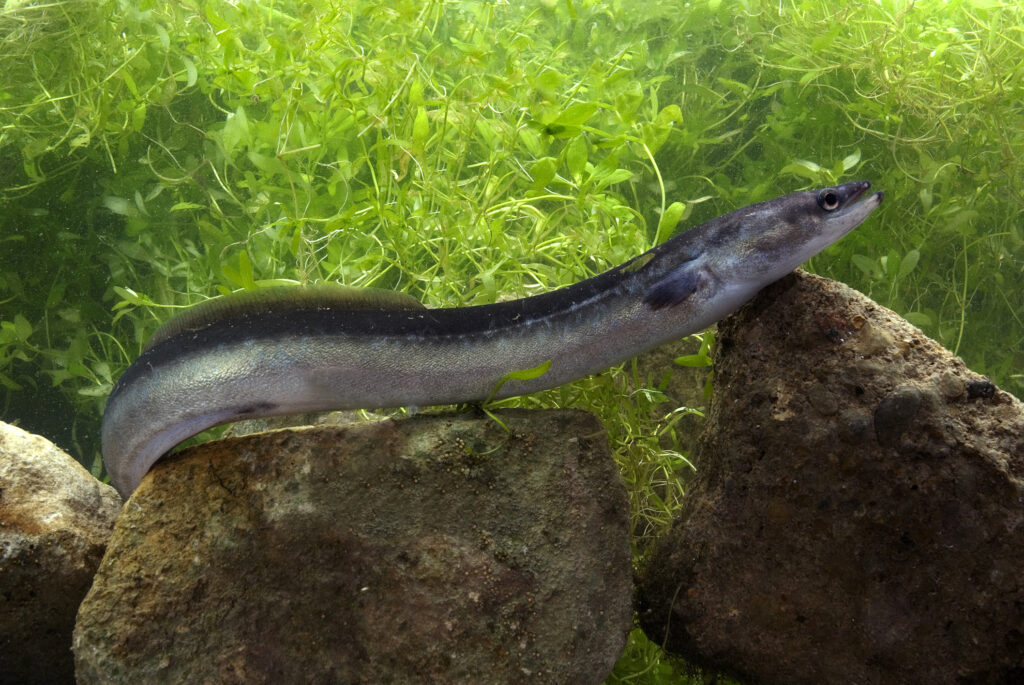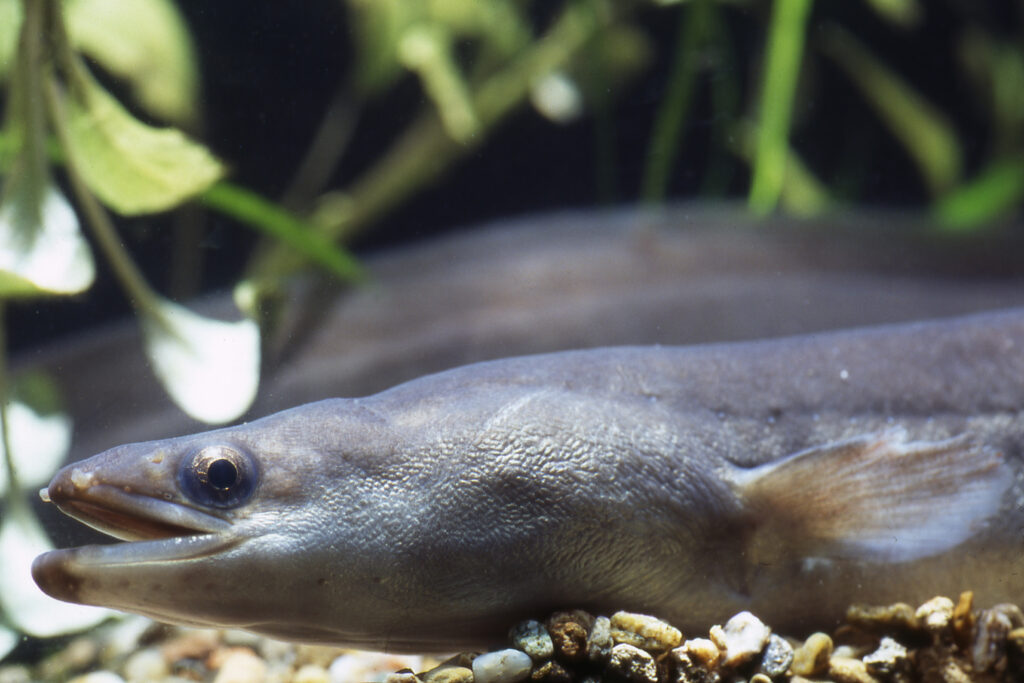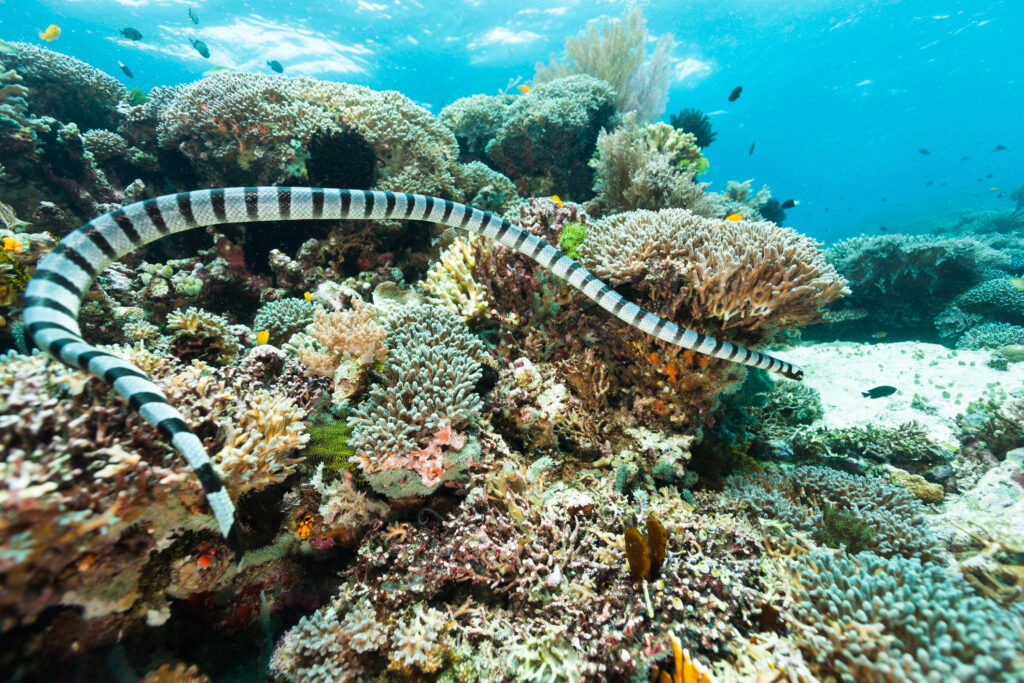Throughout the world’s oceans, there is a diverse range of sea creatures that have are adapted to survive in the environment that they call home. It’s no surprise then, that some of these marine animals, despite being from very different families, can have similar adaptations to survive in the same environment.
Skinny, long, and live in water are all phrases that can be used to describe both eels and sea snakes, but one’s a reptile and one’s a fish, so what is the difference?
What is a sea snake?
A sea snake, as the name would suggest is the name for a plethora of snakes, that spend significant time in the water, usually to hunt for food. Sea snakes, despite spending a lot of time in water, are still reptiles.
Their bodies are specifically adapted to make them excellent swimmers compared to their solely land-dwelling cousins. An example of such an adaptation is their paddle-like tails that allow them to propel themselves through the water.
Sea snakes do not have gills so they cannot breathe underwater, but they are able to hold their breath for extended periods of time and are also able to absorb oxygen into their blood through their skin.
What is an eel?
Eels, on the other hand, are a type of slender fish that is visually similar to a snake. Unlike most other fish, eels lack pelvic fins and only have very small pectoral fins.

Much like sea snakes, an eel’s body is slender and adapted to glide through the water by generating waves up their body. Eels can also swim backwards by reversing the waves’ directions.
Key differences in appearance
Sea snakes and eels are both very similar-looking animals, but you’ll be interested to know that there are some key differences to set them apart.
The main difference in how an eel and a sea snake look is that a sea snake doesn’t have any fins or gills.
As well as this, when in water, eels are said to resemble a ribbon gliding through the water, whereas sea snakes resemble a thin piece of rope.
Habitat differences
Eels can be found in both seawater and freshwater, with most living in the sea. They may live in the shallower waters and burrow in the sand and mud, while other species live much deeper. On the other hand, sea snakes are mostly found in the tropical waters of the Indian Ocean and western Pacific Ocean.

Sea snake vs eel diet
Due to their widely differing habitats, it is unsurprising that even though they look similar, sea snakes and eels have vastly different diets.
Sea snakes rely primarily on small fish and fish eggs for sustenance which are found in abundance in the oceans that they inhabit.
Eels on the other hand, must broaden their horizons, feeding on not only small fish but also invertebrates, crustaceans, shrimp, crabs and sea urchins. Some species of eel are even cannibalistic, meaning they eat other eels!
How long do sea snakes and eels typically live for?
As with most animals, the lifespan can vary wildly depending on what species it belongs to.
For example, the honeycomb moral eel (Gymnothorax favagineus) is known to live to approximately 30 years, with its European cousin (Aguilla anguilla) being known to live up to around 50 years, although an average lifespan of 20 years is much more common. While we know very little about the lifespan of a sea snake currently, scientists agree that most species live up to around 5-10 years on average.
Defence mechanisms
Despite their relatively small stature, eels and sea snakes are both formidable opponents that you wouldn’t want to swim into in a hurry! Let’s look at how these incredible animals defend themselves from predators.
Electric eels are known for their ability to produce electricity to shock any predators that get too close – however, they aren’t an eel at all! Electric eels are actually a group of knifefish, that are closer in relation to catfish than true eels.
Other eels defend themselves using incredibly strong jaws and sharp teeth that produce a seriously nasty bite if threatened or disturbed. Some species of eel are also nocturnal meaning that they are less likely to encounter fish that mean to cause them harm.

Like many species of terrestrial snake, most sea snakes have a venomous bite. They use this to capture their fast moving prey. The venom from certain species of sea snake can be potent but luckily sea snakes are generally very reluctant to bite humans unless handled without care.
There you have it! Despite their many similarities, there is an awful lot that separates eels and sea snakes, whether it be the small differences in their appearance, their diet or location. Come and see our eels for yourself at our Coral Seas exhibit!
